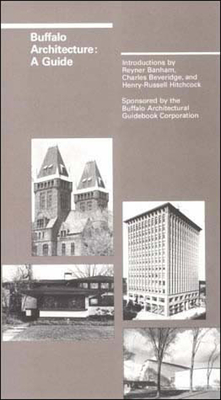You are here
Back to topBuffalo Architecture: A Guide (Paperback)
Description
Buffalo's rich architectural and planning heritage has attracted the attention of several prominent historians, whose work here is accompanied by over 250 illustrations and photographs.
For its size, the city of Buffalo, New York, possesses a remarkable number and variety of architectural masterpieces from the late nineteenth and early twentieth centuries: Adler and Sullivan's Prudential building, H. H. Richardson's massive Buffalo State Hospital, Richard Upjohn's Sr. Paul's Episcopal Cathedral, five prairie houses by Frank Lloyd Wright, and building by Daniel Burnham, Albert Kahn, and the firms of McKim, Mead, and White, and Lockwood, Green and Company, among others.
These structures by prominent "outsiders" served to spur the efforts of local architects, builders, and craftsmen, and all of them built within the context of the city-wide park and parkway system designed by Frederick Law Olmsted. In addition, the city and its environs exhibit representative works by more recent architects, among them Eero and Eliel Saarinen, Walther Gropius, Marcel Breuer, Paul Rudloph, Minoru Yamasaki, and the firm of Skidmore, Owings, and Merrill.
Buffalo's rich architectural and planning heritage has attracted the attention of several prominent historians, capable of the challenge of evaluating its significance. Reyner Banham is one of the world's leading authorities on the theory and practice of architecture, and he has written extensively on design in the industrial age (and Buffalo's innovative manufacturing plants and grain elevators are important exemplars of such design). Charles Beveridge, whose essay covers the park and parkway system, is editor of the Olmsted papers at The American University. And Henry Russell Hitchcock is the dean of American architectural historians, and the organizer of a 1940 exhibition on Buffalo's built environment.
Their essays are followed by seven sections that delineate the city's neighborhoods, each provided with a map, neighborhood history, and a full complement of photographs with descriptive building captions. An eighth section, "Lost Buffalo," describes demolished buildings, chief among them Wright's great Larkin administration building, while the remaining sections venture out of town, exploring Erie and Niagara Counties, other parts of Western New York, and southern Ontario.
About the Author
Henry Russell Hitchcock was a well known architectural historian and Professor at the New York University Institute of Fine Arts.
